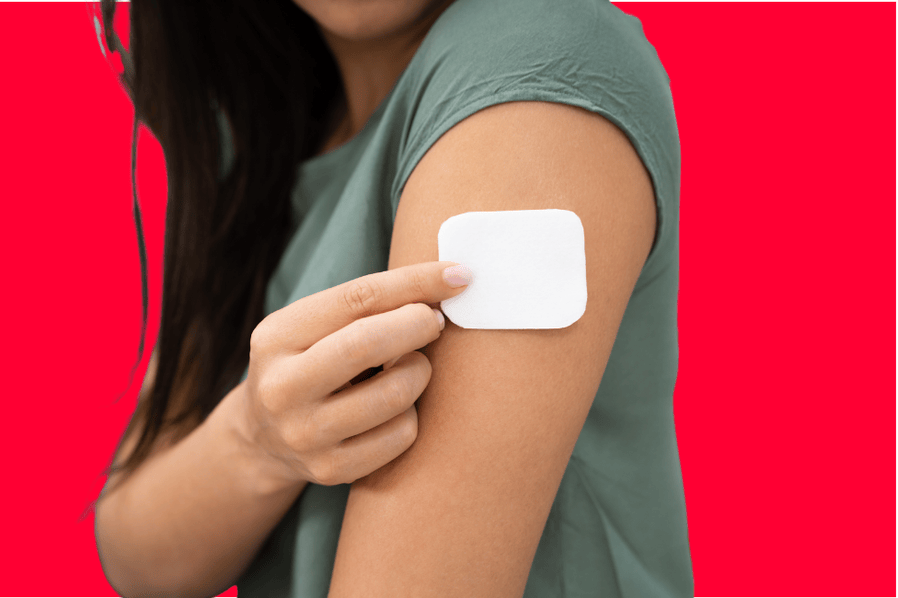How to Dispose of Fentanyl Patches

Despite awareness, education, and recovery programs, the prevalence of drug overdoses in the U.S. continues to be a tragic issue. Overdosing can occur due to intentional use, but it can also happen from unintentional contact. Fentanyl patches are a common cause of the latter, as they deliver a dose of an opioid-based painkiller through the skin. Fentanyl patches are typically reserved for those with chronic pain and cancer, but they can fall into the wrong hands.
The National Center for Health Statistics indicated that, in 2021, there were an estimated 107,622 drug overdose deaths in the United States, with over 70,000 of those deaths occurring due to fentanyl and other synthetic opioid-related drug exposure. Given these alarming numbers, it’s crucial to learn about proper disposal of fentanyl patches. Doing so will help you practice safer disposal methods in your medical facility and prevent additional harm to those in your community.
The Risks Of Fentanyl Patch Overdoses
Fentanyl patches are typically used for patients who need continual pain relief for long-term, chronic pain conditions. The patches release a very specific dosage of fentanyl through the skin to opioid-tolerant patients.
After a fentanyl patch has been used, they can still contain at least 50% of the labeled amount of fentanyl after three days of use. Easy access to unused or expired fentanyl patches can lead to misuse, illicit drug use, and overdosing. If improperly disposed of, either by a patient or a facility, they can cause serious harm to others.
Harm to Children
Children are at high risk of fentanyl overdose due to accidental exposure. When fentanyl patches aren’t secured and disposed of, children have an easier time accessing them. Once a child has access to one, they can ingest and absorb fentanyl by placing the patches in their mouth, on their skin, or by simply handling a used fentanyl patch. When this happens, it can slow the child’s breathing and decrease oxygen levels in their blood. In emergency situations, administering Naloxone to the affected person is recommended, as it can reverse the effects of fentanyl exposure.
Harm to Pets
Similarly, pets are also at risk of fentanyl overdose. Household animals like dogs or cats can either ingest or get in contact with the patch. While dogs have decreased opioid sensitivity, exposure to a high dosage of fentanyl can increase the likelihood of death and requires immediate attention. If your dog (or other household pet) comes into contact with fentanyl, Naloxone can also be used on them to reverse its effects.
Harm to Sanitation Workers
When fentanyl patches are flushed down the toilet or thrown in the garbage, sanitation workers can experience accidental exposure. These workers regularly handle public waste and, despite disposal procedures and sanitation protocols, are susceptible to the dangers of fentanyl patch exposure.
Harm to Public Water Systems
Improperly disposing of fentanyl patches can also pose environmental concerns. Consider those who dispose of patches by flushing them down the toilet. Those patches then travel through systems that lead to waterways and septic tanks — this can pose risks to exposure for both humans and wildlife on a large scale.
Because of the known effects of pollution from improperly disposed medications, people are strongly discouraged from disposing of fentanyl patches in waste collection systems and public waterway systems.
Fentanyl Overdose Intervention
For fentanyl overdose, the signs can be seen within the first 10 to 15 minutes. The affected individual can experience symptoms like slow or shallow breathing, the inability to breathe, loss of balance or muscle coordination, constriction (shrinking) of the pupils, central nervous system shut-down, and feelings of discomfort, depression, or distress. In these cases, it’s important to follow these precautions:
- Personal protective equipment (PPE): If you have access to it, wear personal protective equipment. Residual fentanyl exposure can occur regardless of how the opioid is administered. In cases of emergency treatment, PPE such as gloves, masks, and full isolation gowns should be worn to help minimize residual exposure to the skin.
- Naloxone administration: Naloxone administration is the first line of treatment for fentanyl overdose. Narcan is the most familiar brand, and it’s available as a nasal spray or injectable. It’s recommended that Naloxone be administered immediately. If the victim isn’t breathing, perform rescue breathing directly after the Naloxone is administered. If the victim is still unresponsive 3 minutes after the first Naloxone dose, administer a second dose.
- In-hospital exam and diagnosis: For those within hospital settings, thorough physical exams, neurologic exams, and diagnostic tests should be performed to identify any abnormalities within the patient. In-house blood work, urinalysis, and other toxicology labs should be performed when the patient is stable to assist in diagnosing the patient with any effects from cross-reactive drugs in their system.
- Therapeutic interventions: Depending on the concentration of exposure and symptoms present, intravenous or intramuscular dosage of Naloxone should be administered and repeated in emergency scenarios until the victim is stabilized. If there are significant respiratory issues, you should use oxygen ventilation, either manual or through a mechanical ventilator. Any other symptoms such as hypotension also need to be addressed as part of a 24-hour, continued care plan.
If you’re unable to treat an overdose properly, it’s vital to transport the victim to emergency care for proper, immediate treatment.
Steps To Take For Disposal of Fentanyl Patches
As a medical facility, taking the steps for proper disposal of fentanyl patches is crucial to help prevent overdosing and death. When disposing of these patches, don’t dispose of them by placing them in the garbage or flushing them down the toilet. As we’ve discussed, that can increase the risk of accidental and environmental exposure.
To ensure that you’re properly disposing of fentanyl patches, follow these steps.
Wear PPE
Wearing protective gloves, a mask, and full isolation gowns can prevent accidental exposure to fentanyl. If PPE isn’t worn, residual substances can be transferred to exposed skin and sinus airways through the mucus membranes, making it easy for it to enter the bloodstream.
Fold the Patch
When handling the patch, fold it in half so the adhesive side of the patch is stuck together. Sticking the adhesive sides to one another can prevent you from coming into contact with any residual substances.
Securely Store the Patch
Make sure to dispose of the patch in a storage container that’s tamperproof and childproof. In a medical facility, any medical-grade lock storage container can be used for labeling and securing medical waste that may be sharp, might leak, or can allow for potential exposure to pathogens.
Deliver to Your Waste Handler
For medications like fentanyl patches, they need to be completely sterilized and incinerated before being disposed of in landfills. When handling such waste, it’s recommended that you contact your local waste handler.
Find Reliable Waste Removal with Medical Waste Pros
At Medical Waste Pros, proper disposal of fentanyl patches matters. That’s why our company focuses on comprehensive solutions for healthcare, laboratory, and other medical facilities nationwide. We work with a network of pre-screened waste disposal professionals to help ensure your medical waste is securely disposed of while following applicable regulatory guidelines. For more information about our medical waste disposal services, give us a call at (888) 755-6370 or fill out the form to get your free quote!










